Digital Poster
Interventional MRI: Radiation Oncology
ISMRM & ISMRT Annual Meeting & Exhibition • 10-15 May 2025 • Honolulu, Hawai'i

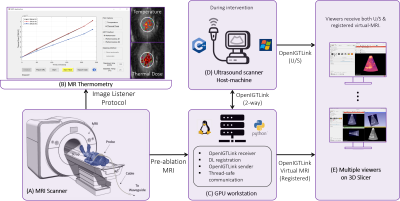 |
Computer Number: 97
2197. An
Integrated Platform for Tumor Targeting and Thermal Ablation:
Improving Efficacy and Efficiency of Percutaneous Liver Cancer
Treatment.
A. Ajala, J. Mitra, C. Bhushan, H. Chan, D. Mills, R. Darrow,
S. Huang, J. Sakhardande, B. Bednarz, T. Foo, S. Wells, J.
Holmes, D. T. B. Yeo
GE HealthCare, Niskayuna, United States
Impact: The implemented integrated platform has the
potential to enhance the efficacy and efficiency of MWA
procedures in HCC treatment via precise tumor targeting and
improved temperature monitoring. The integrated platform is
deployable for other kinds of ablative procedures and
pathologies.
|
|
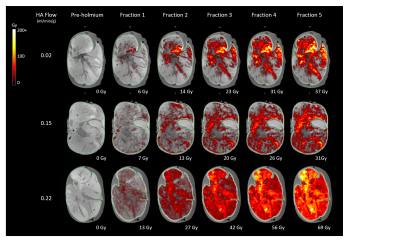 |
Computer Number: 98
2198. Porcine
liver machine perfusion under MRI to study the influence of
hepatic arterial blood flow on microsphere distribution in
radioembolization
T. Snoeijink, A. van den Brekel, J. van der Hoek, J. Greve,
H. Liefers, M. Boswinkel, S. Ruiter, E. Groot Jebbink, J.
Nijsen
Radboud University Medical Centre, Nijmegen, Netherlands
Impact: Our ex vivo porcine liver perfusion setup under
MRI provides an unique platform to assess the influence of
patient-specific parameters during TARE. This platform may
also contribute to the detailed study of various liver
diseases and potential treatments under MRI.
|
|
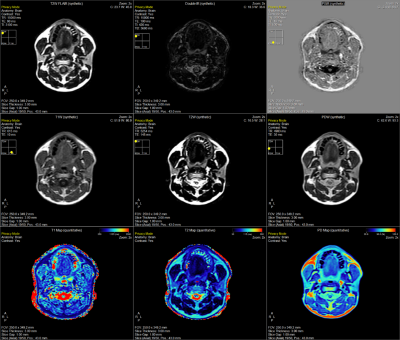 |
Computer Number: 99
2199. Technical
Development and In Silico Implementation of SyntheticMR in
Adaptive Radiation Therapy on the 1.5T MR-Linac
L. McCullum, S. Mulder, N. West, R. Aghoghovbia, A. Ali, H.
Scott, T. Salzillo, Y. Ding, A. Dresner, E. Subashi, D. Ma,
R. J. Stafford, K-P Hwang, C. Fuller
The University of Texas MD Anderson Cancer Center, Houston, United States
Impact: SyntheticMR can enhance the MR-Linac workflow in
the following ways: 1) multi-contrast anatomic/quantitative
information in a single scan, 2) superior quantitative
accuracy and spatial resolution compared to existing
techniques, and 3) clinically acceptable repeatability,
reproducibility, and spatial accuracy.
|
|
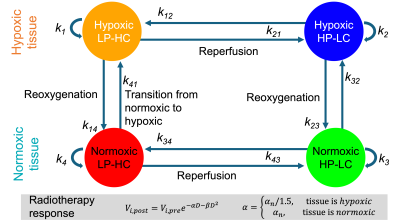 |
Computer Number: 100
2200. Predicting
the trajectory of radiotherapy response in patients with head
and neck cancer using mathematical modeling of MRI-based
habitats
D. Hormuth II, M. Dubec, A. Lozano, K. Harrington, D.
Buckley, J. O'Connor, T. Yankeelov
The University of Texas at Austin, Austin, United States
Impact: MRI-based modeling of intratumoral heterogeneity
in hypoxic, perfusion, and cellular status can predict
changes in tumor biology in response due to radiotherapy.
Patient-specific predictions based on dynamic changes in
imaging parameters could be used to identify optimal
radiotherapy strategies.
|
|
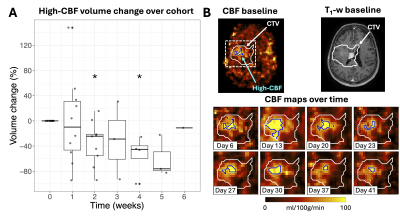 |
Computer Number: 101
2201. Improving
accuracy of MR-Linac arterial spin labelling for imaging
dynamics of highly-perfused tumour regions in glioblastoma
L. Lawrence, B. Chugh, J. Stewart, M. Ruschin, A. Theriault,
J. Detsky, S. Myrehaug, P. Maralani, C-L Tseng, H. Soliman,
M. J. Lim-Fat, S. Das, A. Sahgal, A. Lau
University of Toronto, Toronto, Canada
Impact: Accurate cerebral blood flow measurements from
MR-Linac arterial spin labelling are possible by using the
measured labelling efficiency. To target highly-perfused
glioblastoma regions with dose-escalation, targeting
enhancing tumour is insufficient and adaptation is required.
|
|
 |
Computer Number: 102
2202. Quantitative
3D T1ρ Imaging for Monitoring Radiotherapy Treatment Response in
Cervical Cancer
S. P. Jogi, V. Williams, Q. Peng, R. Otazo, M. Kollmeier, V.
Yu, C. Wu
Memorial Sloan Kettering Cancer Center, New York, United States
Impact:
This study demonstrates the feasibility of using quantitative 3D T1ρ imaging to assess the response to concurrent chemoradiation in cervical cancer. T1ρ imaging can provide complementary information to help predict treatment response at early timepoints during chemoradiation to individualize treatment. |
|
 |
Computer Number: 103
2203. Real-Time
MR-Based Measurement of Radiation-Induced Free Radical
Generation on Clinical Low-Field 0.35T MR-Linac
C. Park, N. Warner, V. Venkatachalam, A. Sudhyadhom
Brigham and Women's Hospital, Harvard Medical School, Boston, United States
Impact: This work establishes the foundation for
real-time, non-invasive measurement and monitoring of
radiation-induced free radical generation (FRG) during
radiation therapy, toward enabling biological adaption that
accounts for spatial- and patient-specific responses, and
ultimately improving therapeutic outcomes.
|
|
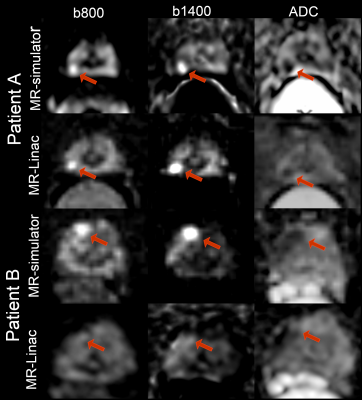 |
Computer Number: 104
2204. Intraprostatic
Lesion Conspicuity Reproducibility Assessment of DWI in 1.5T
MR-guided Radiotherapy: MRI-Simulator vs MR-Linac
O. L. Wong, J. Yuan, D. Poon, S. T. Chiu, C. Xue, B. Yang
Hong Kong Sanatorium & Hospital, Hong Kong, Hong Kong
Impact: This study reveals moderate reproducibility of
intraprostatic lesion conspicuity between MR-simulator and
MR-LINAC systems. Findings underscore the need for improved
DWI quality and standardized protocols in MR-guided
radiotherapy.
|
|
 |
Computer Number: 105
2205. Online
Motion-Resolved 4D MRI with Pseudo-Golden-Angle Radial
Acquisition and Deep Learning Reconstruction on a 1.5T MR-Linac
C. Wu, S. Siddiq, S. Jogi, V. Murray, R. Otazo
Memorial Sloan Kettering Cancer Center, New York, United States
Impact: Motion-resolved 4D MRI is feasible with PGA
radial sampling, presenting performance similar to GA radial
sampling. The combination of PGA sampling and Movienet
reconstruction would enable the integration of 4D MRI into
the Elekta MR-Linac clinical workflow for adaptive
radiotherapy.
|
|
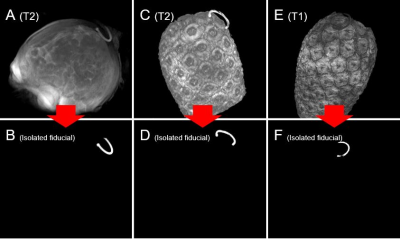 |
Computer Number: 106
2206. Automated
Intraprocedural Detection and Registration of Interventional
Devices via Characteristic Fiducial Markers
T. Lilieholm, J. Guerrero Gonzalez, A. Alexander, T. Oakes,
W. Block
University of Wisconsin-Madison, Madison, United States
Impact: Applied methods were able to leverage geometric
information from characteristic fiducial markers to fully
autonomously identify and orient a stereotactic trajectory
guide, streamlining an often manual or multimodal step in
many workflows for MRI-guided interventions.
|
|
 |
Computer Number: 107
2207. Inter-fractional
Size Change of Lymph Node Metastases during MR-guided
Stereotactic Body Radiotherapy in Oligometastatic Prostate
Cancer
J. Yuan, C. Xue, O. L. Wong, D. Poon, B. Yang, S-T Chiu
Hong Kong Sanatorium and Hospital, Happy Valley, Hong Kong
Impact: The study's findings could enhance clinical
practices in managing LNMs in omPC, prompting further
investigations into the prognostic value of inter-fractional
size changes. This research may lead to improved treatment
strategies and personalized approaches, ultimately
benefiting patient outcomes.
|
|
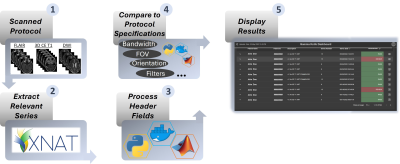 |
Computer Number: 108
2208. An
MRI Quality Assurance Program for Gamma Knife Radiosurgery: A
Systematic Approach to Ensure High Spatial Accuracy and
Precision
M. Servati, C. Walker, P. Hou, D. Mackin, T. Briere, J.
Stafford, J. Yung
University of Texas MD Anderson Cancer Center, Houston, United States
Impact: Automated QA at a multi-site institution
improves spatial accuracy in MR imaging for GKRS, enabling
proactive system maintenance, streamlined approvals, and
immediate corrective actions. This program enhances GKRS
safety and supports continuous improvement in MRI
acquisition quality.
|
|
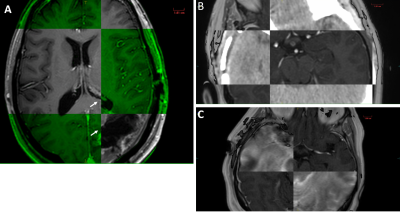 |
Computer Number: 109
2209. Validation
of Multi-modality Image Registration for Glioblastoma Treatments
on the MR-Linac
T. Gribilas, L. Lawrence, A. Lau, R. Oglesby, J. Stewart, G.
Stanisz, B. Chugh
McMaster University, Hamilton, Canada
Impact: A new tool was developed for verifying the
accuracy of registration of MR images, which could be used
to automatically detect inaccurate registrations during the
treatment workflow on the MR-Linac.
|
|
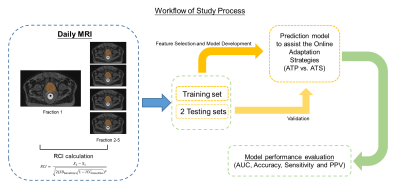 |
Computer Number: 110
2210. Developing
a Predictive Model Using MRI Radiomics for Online Adaptation
Strategies in MRI-Guided Radiotherapy for Prostate Cancer
C. Xue, J. Yuan, D. Poon, B. Yang, S-T Chiu, O. L. Wong
Hong Kong Sanatorium and Hospital, Happy Valley, Hong Kong
Impact: The results of this study could assist
clinicians' decision-making in MRI-guided radiotherapy
(MRgRT) for localized prostate cancer, enhancing treatment
precision and minimizing side effects. Building MRI
radiomics models demonstrates the possibility for
personalized treatment plans, ultimately improving patient
outcomes.
|
|
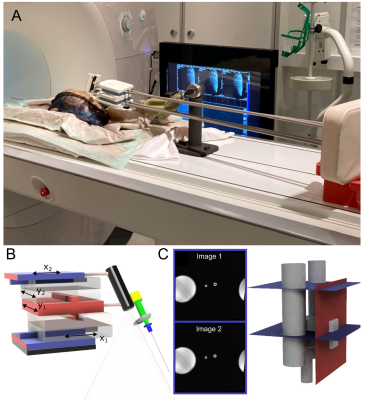 |
Computer Number: 111
2211. MR-guided
Biopsy of Human Ex-vivo Sarcomas using the GantryMate Assistance
System
S. Reiss, B. Bogner, S. Hickey, A. Runkel, M. Bock
University Medical Center Freiburg, University of Freiburg, Freiburg, Germany
Impact: An MRI-guided ex vivo biopsy approach for soft
tissue sarcomas is presented that enables precise
correlation between multi-parametric MRI and histology. The
technique holds promise to improve treatment monitoring
during radiation therapy and could guide future in vivo
studies.
|
|
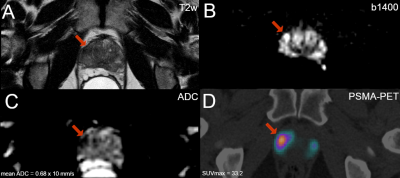 |
Computer Number: 112
2212. Correlation
of PSMA-PET/CT standardized uptake value (SUV) and apparent
diffusion coefficient (ADC) in MR-guided prostate radiotherapy
J. Yuan, O. L. Wong, C. Xue, S. T. Chiu, B. Yang, D. Poon
Hong Kong Sanatorium and Hospital, Happy Valley, Hong Kong
Impact: This study underscores the intricate
relationship between PSMA-PET/CT SUV and DWI-ADC in prostate
MRgRT, significantly affected by the timing of androgen
deprivation therapy administration, which may influence the
scheduling and logistics of MRgRT imaging.
|
The International Society for Magnetic Resonance in Medicine is accredited by the Accreditation Council for Continuing Medical Education to provide continuing medical education for physicians.